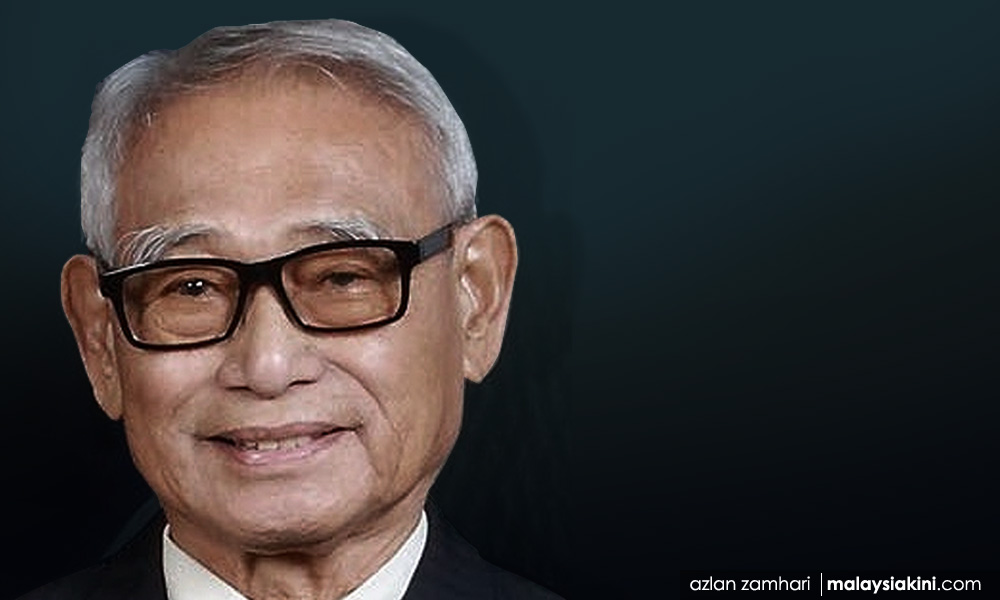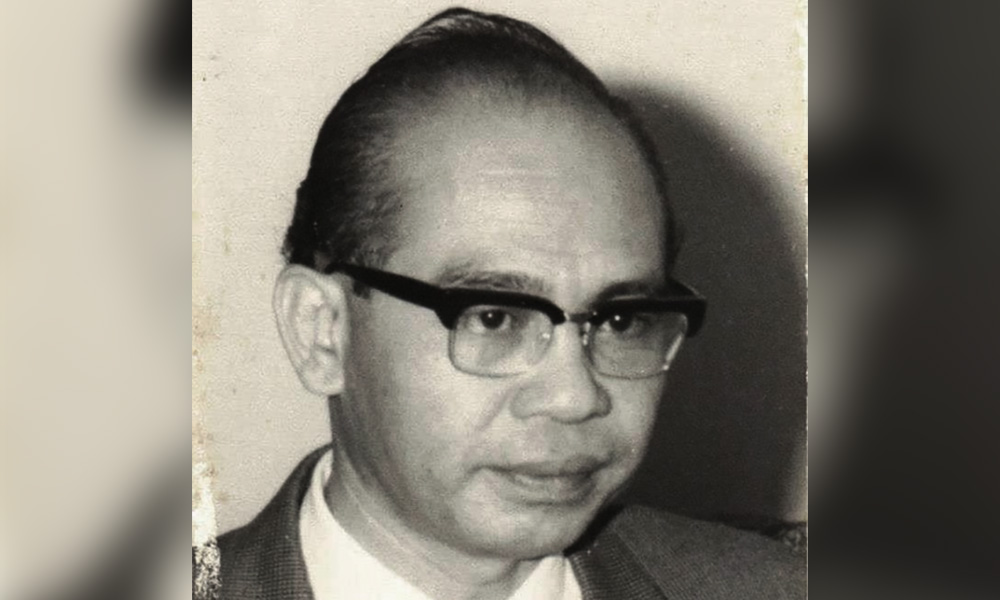
Former Sarawak Deputy Chief Minister Daniel Tajem, considered one of Sarawak’s foremost Iban leaders, passed away on May 27.
Dayakism, the term coined by Tajem when he co-founded Parti Bansa Dayak Sarawak (PBDS) with Leo Moggie in 1983 as the political war cry for the Dayak community, was buried with the 82-year-old Tajem when he was interned three days later, on May 30.
"If Umno speaks for the Malays, MCA for the Chinese and MIC for the Indians, let PBDS speak for us Dayaks," Tajem had famously declared at the birth of the party.
As a journalist with the Sarawak Tribune in 1983, I was among the press corps at Tajem’s residence, a humble government house on Rodway Road in Kuching that afternoon, when the formation of PBDS was officially announced.
That was the birth of Dayakism. Tajem was politically astute to coin “Dayakism” to rally support from the community. PBDS needed a racially-linked slogan to attract support from the Dayaks, rightly or wrongly and it worked initially.
Admittedly, I was not that politically mature 35 years ago to fully grasp it all. If the Dayaks really wanted a party they could call their own, they had every right to form one. Well, that was my simplistic, very ordinary but fair judgment, or so I thought.
But one thing was clear even then. A party established along racial lines surely wouldn’t last long. Not in Sarawak!

PBDS was born because Moggie (photo) was defeated by James Wong, a Chinese, for the presidency of the Sarawak National Party (SNAP) in 1981.
The vacancy of the SNAP presidency was caused by the abrupt resignation of Dunstan Endawie, also a deputy chief minister then, for reasons not publicly known till today. Endawie was immediately dispatched off to Wellington as Malaysia’s envoy to New Zealand.
Sarawak’s strongest party at one time
This set the stage for the crisis in SNAP, Sarawak’s strongest political party at one time with Edmund Langgu, a SNAP MP, even holding the Malaysian Opposition Leader’s post on one occasion. SNAP was bigger than the DAP then.
Moggie and Tajem had insisted that SNAP, a Dayak-based party, must be led by a Dayak. This was the start of it all. In hindsight, this was not such a valid nor strong reason for the Snap rebels to set up a rival party and go against the one that kick-started their political careers.
Moggie and Tajem, nor the other PBDS leaders, had ever regretted the role they played in the destruction of SNAP as a result of their betrayal. By the time SNAP was finally deregistered in 2013, it was a pale shadow of its former self. PBDS had also faced its own internal crisis and its fate was finally sealed in 2004.
The Dayakism fade died when PDBS was admitted in the Barisan Nasional in 1994 after spending seven years in the opposition in Sarawak. By then, Dayakism was hardly heard of again.
History might record Dayakism as nothing but a farce. Wasn’t it a mere soundbite to whet the political appetite and egos of some Dayak leaders who were defeated in the SNAP elections?
PBDS was never the second Dayak party after SNAP. It would not be right for party leaders to claim PBDS as the sole voice of the Dayak community. Why? Before PBDS was formed, another major Dayak-based party had already existed, apart from SNAP.
SNAP was formed in 1961, principally as a platform for the Dayak community while Sarawak prepared for Independence. However, in August 1962, another party came into being in Sibu to cater for the Ibans of Batang Rajang. Its promoters had refused to join SNAP, which they said only catered for Ibans from Saribas.
The party was known as Parti Pesaka Anak Sarawak (Pesaka) and among the initiators were Temenggong Jugah Barieng, Temenggong Oyong Lawai Jau and Penghulu Francis Umpau.
Pesaka a major player
Pesaka was also a major player after the formation of Malaysia in 1963. Jugah Barieng became the minister for Sarawak affairs with Francis Umpau in the Sarawak cabinet. Umpau was also considered for the post of chief minister following the sacking of Sarawak’s first chief minister, Stephen Kalong Ningkan (photo), in 1966. However, the post later went to Penghulu Tawi Sli.

While SNAP and PBDS are dead and gone today, Pesaka is still very much alive in the merged Parti Pesaka Bumiputra Bersatu (PBB). Pesaka and the Malay-based Parti Bumiputra merged in 1970 to form PBB. PBB and the Sarawak United People’s Party (SUPP) established Sarawak’s first coalition government headed by PBB’s Abdul Rahman Yakub as chief minister. It later became the BN government, which rules Sarawak till this day.
Perhaps, my Dayak brethren should seriously ask themselves one very simple but important question. Why are they so scattered in so many political parties? In fact, all parties in Sarawak, including the smaller opposition ones, have Dayak members.
There are Dayak members in PBB, PRS, SUPP and PDP on the government side and in PKR and DAP within the state opposition.
Dayak members are also in Star, PDBS Baru, Parti Peace and Parti Kenyalang Sarawak. It is impossible to name a party in Sarawak without Dayaks in them.
Why is the Dayak community so divided and fragmented politically?
Indeed it’s time to forget Dayakism totally and never allow it to resurrect. It should all be about ‘Sarawakism’ now, where all Sarawakians think of themselves as a united, single entity with a shared responsibility and a common vision and future for their beloved homeland.
Rafidah Aziz has asked the Malays to stop thinking of “Ketuanan Melayu” but “Ketuanan Malaysians”. In Sarawak, we should all think “Sarawakism” or “Ketuanan Sarawakians” from now on.
When I posed the slogan of “Yes to Sarawakism now, No more Dayakism” to Sarawak Deputy Chief Minister Dr James Jemut Masing, this was his response:
“Let’s move towards One Sarawak, One Struggle. Communal politics is dead.”
Well, at least one prominent Iban leader also agrees with me to think Sarawakism.
FRANCIS PAUL SIAH heads the Movement for Change, Sarawak (MoCS) and can be reached at sirsiah@gmail.com - Mkini


No comments:
Post a Comment
Note: Only a member of this blog may post a comment.